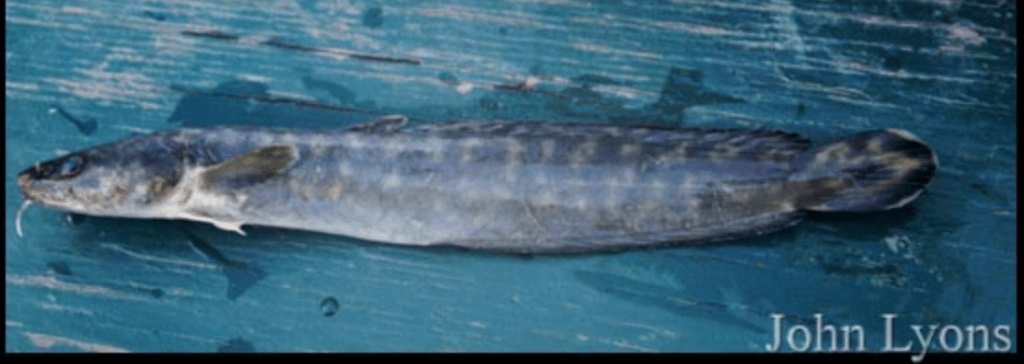Key Characteristics:
- 14-20 preanal myomeres
- 35-42 postanal myomeres
- Isocercal tail

Larval Burbot. United States Fish Wildlife Service. Marian Shaffer. 2017.

Larval Burbot. United States Fish Wildlife Service. Marian Shaffer. 2017.

Larval Burbot. United States Fish Wildlife Service. Marian Shaffer. 2017.

Larval Burbot. United States Fish Wildlife Service. Marian Shaffer. 2017.

Larval Burbot. United States Fish Wildlife Service. Marian Shaffer. 2017.

Larval Burbot. United States Fish Wildlife Service. Marian Shaffer. 2017.
- Body not elongated, eel-shaped, round in transverse section, uniformly pigmented (1B)
- Chin barbels present (3A)
- Mouth Terminal; single barbel on lower jaw; usually 10-20 mm TL; pigment restricted to dorsum of stomach and head; no dark lateral band (4A)
- Gadidae
Adult History
- Physical Description
- Elongated dorsal (2 fins) and anal fins (52-76 rays), single barbel under the chin, the second ray is elongated, fine scales, no spines, fine teeth on upper and lower jaws, terminal-wide mouth, and eel-like body shaped
- Spawning Habitat
- Shallow Water (0-5 meters deep)
- Near the surface of shallow water
- Spawning Substrate
- Under ice or in slow-moving water
- Eggs are deposited on hard clay, gravel, stones, sandy bottoms, and deep shoals
- Spawning Behavior
- Occurs mostly at night
- No nests are built
- No parental care
- Migrates upstream to shallow water to spawn
- Time of Year
- December – January in Lake Michigan
- Eggs hatch between April – June
- Spawning typically takes place at water temperatures of 30 – 40°F
- Diet
- Omnivore
- Small fish, fish eggs, clams, crayfish, and aquatic crustaceans


